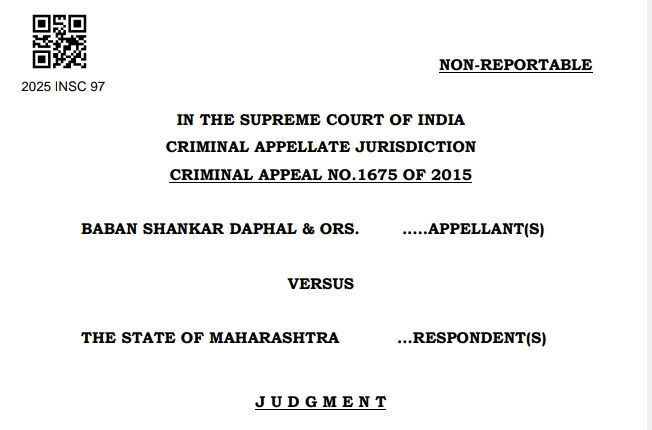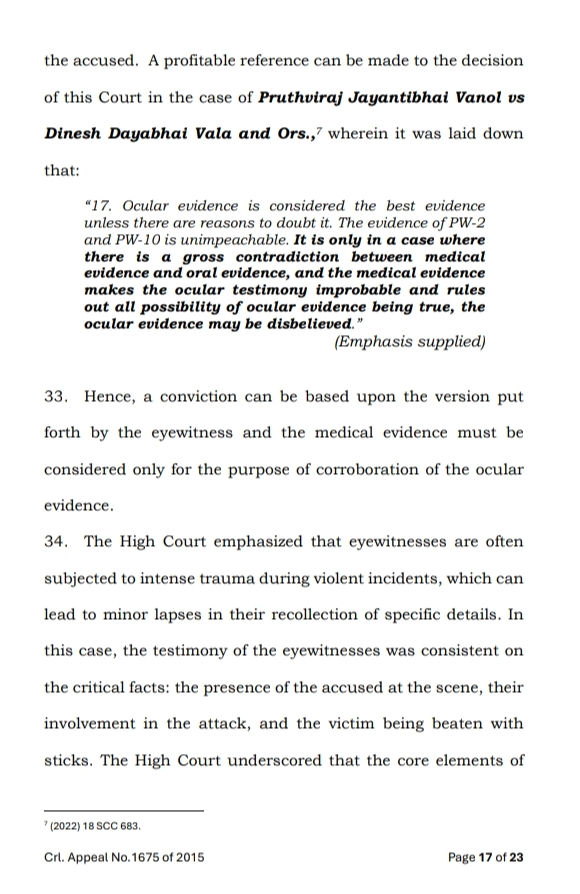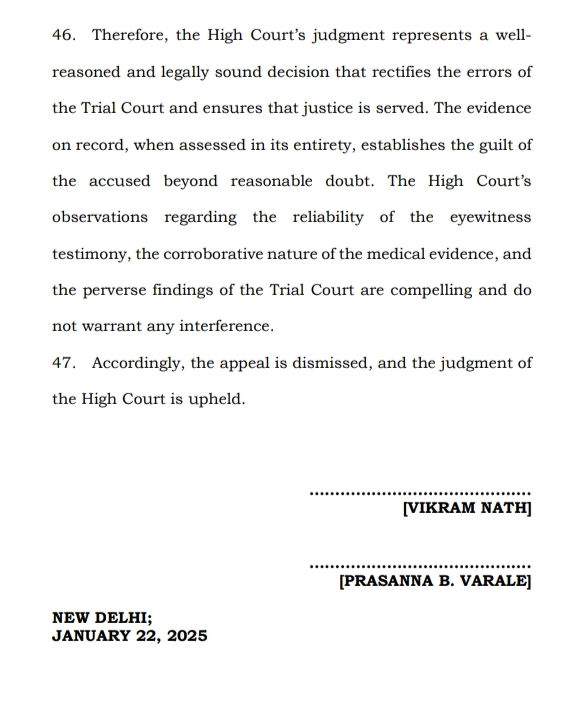The recent Supreme Court judgment in Baban Shankar Daphal & Ors. vs. State of Maharashtra (2025 INSC 97) has sparked significant discourse on the legal principles governing eyewitness testimonies, particularly in cases where the witnesses are closely related to the victim. This case, involving the brutal murder of Lalsaheb by his relatives over a property dispute, underscores the judiciary's role in assessing evidence holistically while ensuring justice prevails.

The incident occurred in 1987 in Maharashtra, where the victim was attacked with sticks by the accused after a prolonged family feud. The Trial Court acquitted the accused, citing discrepancies in eyewitness accounts and a lack of corroboration between medical evidence and oral testimonies. However, the High Court overturned the acquittal, convicting four of the accused under Section 302 read with Section 34 of the Indian Penal Code. The Supreme Court recently affirmed this decision, providing critical insights into the evaluation of related witnesses’ credibility and the interplay of medical and oral evidence.
Credibility of "Related" Witnesses
One of the pivotal questions in this case was whether the testimonies of relatives of the deceased could be trusted. The Trial Court questioned their reliability, labeling them as "interested witnesses." However, the High Court, supported by the Supreme Court, clarified that being related to the victim does not automatically make a witness unreliable. Citing precedents like Dalip Singh v. State of Punjab, the courts emphasized that a close relative is often the last person to falsely implicate someone. The judgment reiterated that such testimonies must be scrutinized with care and caution but cannot be discarded solely based on familial ties.
Issues adressed
The significance of corroborative evidence in the face of minor discrepancies.
The role of appellate courts in rectifying judicial errors.
The need for courts to balance stringent standards of proof with rational evaluation.
The Supreme Court also addressed the inconsistencies in the eyewitness accounts, which were a significant factor in the Trial Court's acquittal. It noted that minor discrepancies are expected in cases involving violent crimes due to the trauma experienced by witnesses. The Court emphasized that such variations do not necessarily undermine the credibility of the testimony, especially when the core narrative remains intact. This stance aligns with established legal principles that stress evaluating evidence in its entirety rather than isolating minor contradictions to discredit a witness.
Another crucial aspect of the case was the perceived contradiction between medical evidence and eyewitness accounts. The Trial Court pointed to the lack of multiple head injuries in the post-mortem report, which conflicted with the witnesses’ description of repeated blows to the victim's head. However, the High Court and Supreme Court highlighted that medical evidence should corroborate rather than negate eyewitness testimonies. They found that the injuries documented in the post-mortem report supported the broader narrative of the assault, dismissing the Trial Court’s overly rigid interpretation.
Judicial Responsibility:
The judgment also underscored the importance of procedural fairness and judicial responsibility. The Supreme Court labeled the Trial Court’s acquittal as “perverse,” criticizing its excessive focus on minor inconsistencies while disregarding substantial evidence against the accused. It reiterated that the benefit of the doubt must be based on rational and cogent grounds, not conjectures or hypothetical scenarios.
This judgment has significant implications for the legal landscape, particularly in cases hinging on eyewitness testimonies. It reinforces the principle that the credibility of witnesses should be assessed based on their overall reliability, consistency, and corroborative evidence rather than their relationship with the victim. The ruling also highlights the necessity of a holistic approach to evidence evaluation, ensuring that justice is not undermined by procedural errors or misplaced judicial emphasis

.

The case serves as a crucial reminder of the judiciary’s role in upholding the principles of justice while addressing the complexities of human behavior and evidence in criminal cases. By affirming the conviction and addressing key legal questions on witness credibility, the Supreme Court has reinforced the importance of ensuring a balanced and rational approach to criminal jurisprudence. This decision will undoubtedly serve as a guiding precedent for similar cases in the future.

Kommentare